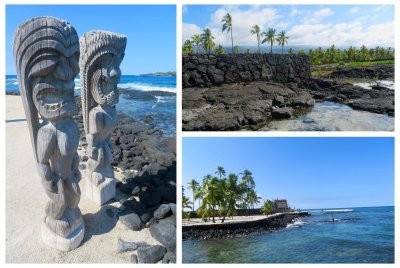
Suggestion for an updated nomination: future tentative list
Consideration of a future Heritage of the Kanaka Maoli (Native Hawaiian People) nomination, Pu'uhonua o'Honaunau NHP would be a major component. It is past due the United States alongside local stakeholders in Hawaii put forward a serial nomination that represents the rich cultural heritage of Hawaii. Puʻuhonua o Hōnaunau National Historical Park (Place of Refuge/Royal Mausoleum), along with Kaloko-Honokōhau National Historical Park (Fishpond Bay, Petroglyphs), and the National Historic Site Puʻukoholā Heiau (Temple on the Hill of the Whale) are all managed by the National Park service and retain their authenticity. Kamakahonu (National Historic Landmark) is also a nationally significant site on The Big Island (Island of Hawai'i). All 4 components are connected by the Ala Kahakai National Historic Trail.
Other potential components such as Mo'okini Heiau (places of worship), which is a National Historic Landmark would also be appropriate. While likely centered on the Island of Hawai'i, there is potential to include a select few other sites found on other islands.
In 1987, ICOMOS deferred 'Pu'uhonua o'Honaunau' while requesting a comparative study of 'Polynesian sites across the Pacific'. Since 1987, there have been multiple Pacific Island cultural and mixed properties inscribed. Papahānaumokuākea alone feels insufficient to encompass the rich heritage of Hawaii, even more so when its nearly impossible to visit. When the United States develops its next Tentative List, I sincerely hope the cultural heritage of Hawaii will be represented. The formulation of …
Keep reading 0 comments
Now that the list of components for the US Civil Rights Movement Sites Tentative World Heritage Site nomination has filled out, I figured I should write about some of the locations that have yet to be reviewed. I visited the three sites closest to my home on the US East Coast in the summer of 2023. One of the sites, the Lincoln Memorial, was covered quite well in Solivagant's excellent review based on his firsthand experience at the March on Washington. The other two sites, Moton High School and the F.W. Woolworth Store, are a bit further off the beaten track for most visitors. I'll cover Moton High School for this review.
Moton High School is located in Farmville, a small town in central Virginia. Prince Edward County constructed Moton in 1939 as a segregated public school for African American youth in Farmville, but the town neglected the school in favor of funding improvements at the white high school on the other side of town. Moton was overcrowded, shoddily repaired, and inaptly heated for the student body. In 1951, Barbara Johns, a junior (the penultimate year of the US high school system), initiated a student-led walkout from classes, appealing to her fellow students to picket outside the school and the county courthouse to raise awareness of the poor conditions at Moton and to demand change. Of note, they requested to conduct this protest on their own, wanting to protect their teachers who they loved from consequences.
The National …
Keep reading 0 comments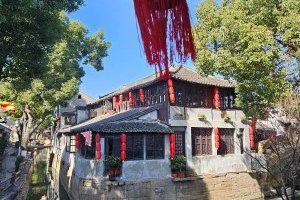
I visited Luzhi Town as a short expedition during my day trip from Shanghai to Suzhou.
This town as well has everything the reviews of the other towns described. There are beautiful canals bordered by traditional houses, nice little bridges and a Chinese garden in the center of the old town. There are several restaurants, shops and of course places that rent out traditional costumes. I visited the Wansheng Rice Shop, some kind of agricultural museum. There is also a boat tour starting right next to the museum, but my otherwise so reliable Alipay app did not work to book that one. All in all the town is very photogenic and very pleasant to visit.
Luzhi is only a 40mins DiDi drive from Suzhou and one way cost me only about 10 USD. If you want to make it complicated and less time efficient, you can also take a bus from Suzhou main station. I had no problem at all to find a driver to bring me there and another one to take me back and drop me off in front of the Humble Administrator’s Garden.
Keep reading 0 comments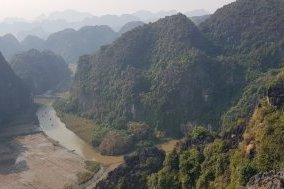
Trang An, just two hours out of Hanoi, seems a world away from it. I was equally excited to visit Trang An as I was Ha Long Bay when I planned our family vacation to Vietnam in January 2025. On a long day trip from Ha Long, we climbed up Hang Mua, had a lunch of fried corn and goat stir fry among other local specialties, and took a boat tour of the Trang An complex before catching the sunset at the Ho Dynasty Citadel. I must say that a tour of the Ninh Binh area would definitely be a highlight for any trip to Vietnam. It’s extremely scenic and enjoyable. But what about the WHS that is Trang An?
Climbing about 375 steps to the viewpoints in Hang Mua would be enough to enjoy a fairly panoramic view of the surroundings and appreciate the scale of Trang An, including a glimpse of the Tam Coc boat tours below the far side of the mountain (pictured). For the best views but only for the able, 100 more steps and a bit of limestone scrambling gets you as high as you can go, with a true 360° vantage point, albeit often with a precarious grip (which didn’t stop tourists of all ages). For the less able, picture opportunities exist at the adjacent Lotus Lake, with views of Hang Mua and several limestone monoliths rising from the plains. Then, for the boat tour, we chose Route 3 as the only way …
Keep reading 0 comments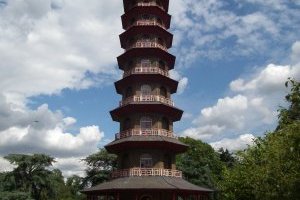
I know it's stating the obvious but.........don't go to Kew Gardens unless you're really interested in plants and gardening. I'm not and I have to be honest and say that I was a bit underwhelmed by the place and thought that the cost was too high.Let me elaborate, there's a lot of open green spaces, I mean A LOT, which may be green and natural but are not gardens. I think I expected something more akin to the Chelsea Flower Show than Hyde Park hence my overall disappointment. I did enjoy the hot houses, Kew Palace and the pagoda (picture).Ultimately though, I found it to be disappointing and not worth the entrance fee (currently £22) especially when there are some excellent parks to visit in London, for free.
Keep reading 0 commentsI visited Kharkiv in 2021, six months before the start of the... disaster.
At that time, I was not yet part of the UNESCO enthusiast community, so I had no idea that I was next to a nominee for inclusion in the World Heritage Site. But even then, I was impressed by the massiveness and grandeur of the building - a very unusual architecture for Kharkiv.
Outside, there is also a large fountain built into the sidewalk. In the hot summer of 2021, you could meet children and their parents there every day, who were cooling off in powerful jets of the fountain in their bathing suits. I was no exception.
Unfortunately, I have not been inside Derzhprom, but I hope to fix this someday. I also hope that the building will survive until the end of the war. A few weeks ago, it was already damaged by shelling.
Keep reading 0 comments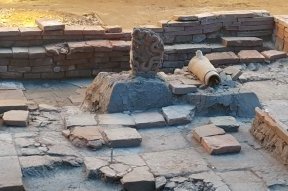
Thang Long is surely far from being the most popular WHS here. As I planned my January 2025 trip to northern Vietnam, I fully expected it to be close to the bottom of my rankings. Barely anything remains from its 11th century state that is often stated as the basis of its OUV, right? Yes, all that can be seen from that period are artifacts from the archaeological digs, and even then, the majority come from the 13th-14th centuries. Most of what remains are indeed recent Nguyen and French additions. While Nguyen structures may pale in comparison to Hue, the little gates and pavilions are distinct and beautiful royal constructions still exemplary for the period as a whole. The French colonial architecture in Hanoi is both rich and underrepresented in WHS, and this holds true for the buildings in and around the citadel too.
The 1467 Kinh Thien staircase is a subtly impressive structure from the Le Dynasty, coming right after the Ho Dynasty, with stonework that reminded me slightly of the Korean kingdoms. This would be the single oldest structure you will find within the walls of the citadel, and perhaps the most impressive (of course, that’s not saying much). Across the street, the 18 Hoang Dieu archaeological site is quite expansive, with two large zones on either side of a pond. The remains reminded me a bit of the Biblical Tells, with several layers of remains, each one older than the one above it. Occasionally, you could …
Keep reading 0 comments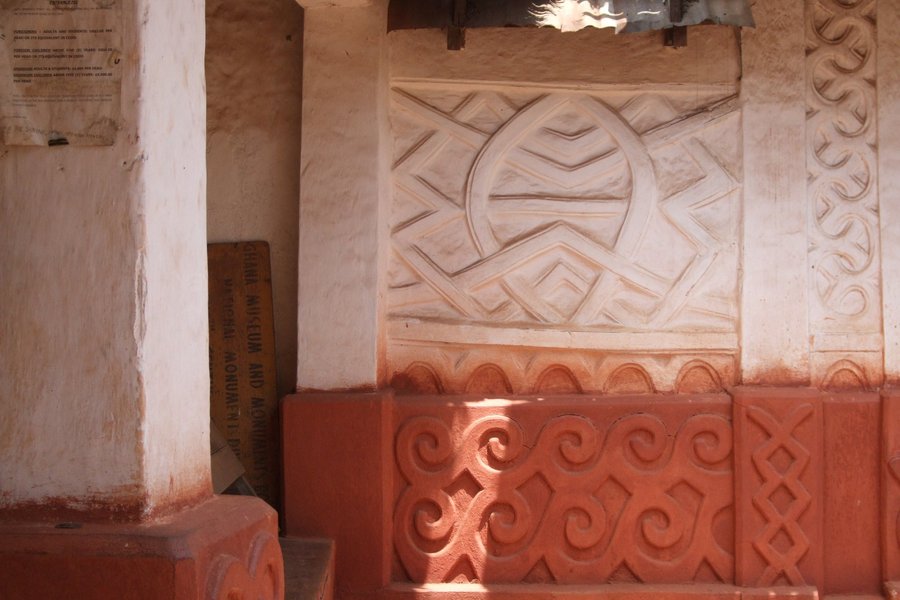
I booked a tour with a local company, Ashanti African Tours, to spend four days in Ghana, visiting the forts and the Asante traditional buildings as well as the Akwasidae Festival, a traditional Asante festival that happens once every six weeks. I was too focused on visas and anti-malarials and a snow storm to closely check the itinerary, which just had an afternoon visiting the site. I was disappointed to learn that only the shrine at Ejisu-Besease had been included. I asked that more be added and also visited Adako-Jackie, which is nearby. I would be specific on any tour and say you want to visit multiple of the shrines. Although I usually have a 30% rule — e.g., have to see at least 30% of the components of a site — I am going to mark this one off, as I did the best I could and I already compromised my rule with the Stecci.
As to the buildings, they are shrines built in the traditional Asante style, often in the 1800s to early 1900s. Due to the wars with the British, there are only around ten such buildings remaining. In many cases, there have been shrines on the sites for hundreds of years. This he shrines typically have four buildings around an open courtyard and have decorated walls and thatched roofs. Some of the thatched roofs are being replaced by metal ones to better protect the buildings and lower maintenance costs. The shrine at Adako-Jachie was under …
Keep reading 0 comments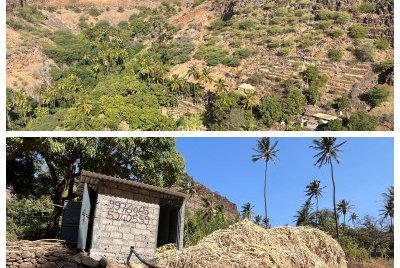
Cidade Velha is an easy, short excursion from Santiago’s (and Cabo Verde’s) capital Praia. A bay, a few cobbled streets, remains of Portuguese fortifications and churches – you know what it looks like even before you have seen it. I tried a different approach for my visit and went for a guided hike through the Ribeira Grande Valley. This way I also ticked one of the other activity boxes I had for Cabo Verde: “Do a hike in the countryside” (as the archipelago is known as a hiker's paradise).
When you look at the official map of Cidade Velha WHS, you’ll notice that not only the seaside town is included but also a much larger area inland. The boundaries of the core zone follow the canyon that was carved out by the river Ribeira Grande. This area is linked to a specific part of the site’s OUV: the “acclimatisation and dissemination of numerous plant species between the temperate and tropical zones”. The Portuguese colonists experimented with various crops here in the 16th and 17th centuries, starting unsuccessfully with cereals but later finding out that plants from Africa’s mainland (coconut) and Latin America (maize) did well.
We started our hike in the village of Calabaceira. From there, a marked trail leads down into the valley. The guided hike is labelled as “an easy and accessible path for every hiker” by the tour company, but the volcanic soil is rocky all the time and especially going down you have to …
Keep reading 0 comments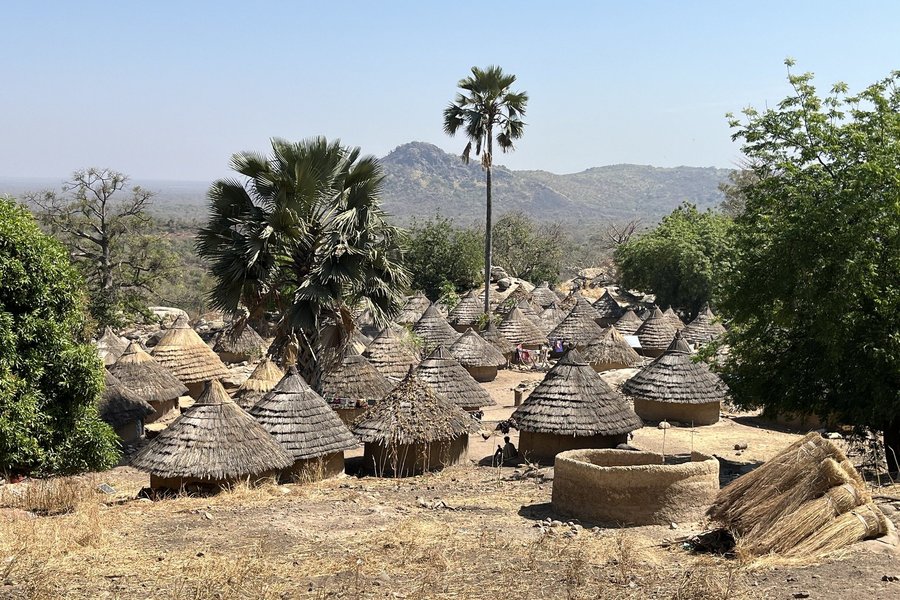
Bassari Country is almost contiguous with that other East Senegal WHS, Niokolo Koba National Park. However, you must drive around the park (2.5-3 hours) to get to where the Bassari live. Along the way, you will already see plenty of traditional houses in mixed villages by the roadside.
We started our visit at location #3, Dindefello. This is a typical mixed village on lower ground, inhabited mostly by Fula and with ‘modern’ houses as well. It has a fine setting with the massive wall of the Fouta Djalon Massif rising behind it. On its main street, there’s a Visitor’s Center where you have to pick up a local guide and pay for access to the waterfall.
Dindefello Falls are the region’s pride but it is hard to imagine a sizeable waterfall in this dry landscape. We had to walk for half an hour through the forest to get there. The path is adjacent to a river, where women cleaned their laundry by ‘beating’ it on stones. The noise sounds like gunshots. The waterfall was no disappointment: a long, sheer drop coming from the rocks. A pool had formed below it; my guide and driver tried it, but the water was too cold in the early morning for a swim.
The guide had promised me a visit to a ‘real real’ village as well. After some deliberations with the guys at Dindefello reception, we were given a contact number for a local guide who could give us access to Andiél. This …
Keep reading 0 commentsDigits
Route of the Franciscan Evangelisation
Route of the Franciscan Evangelisation (On tentative list)
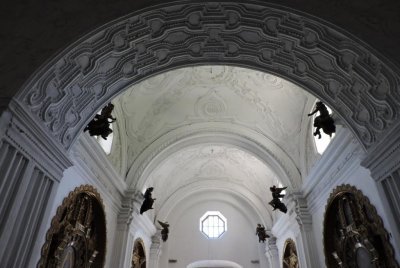
Can you review a tentative site where the components are unknown? We visited the Iglesia de San Francisco in Antigua in the summer of 2016 which would presumably have been one of the supposed 26 components. More churches you say? I would have been the first to say surely saturation point has been reached on the religious sites. But then … the more I thought about it … the more I thought it might be … merited?! The vast majority of sites related to colonialism focus on urban ensembles which don’t necessarily hone in on the role of missionaries in altering the fabric of a region permanently.
Franciscans and Dominicans dominated the evangelisation of areas of Spanish conquest. During the 16th century, the construction of monasteries directly paralleled the route of evangelization, in Yucatán, Chiapas and Guatemala. Franciscans built their churches above Maya temples and oversaw hispanicization of the mayan descendants. Our “Christian missions” connection links sites all over the Americas, yet there are none between Mexico City and Bolivia. Can we imagine if this was Europe that there wouldn’t be anything considered of comparable outstanding universal value to existing sites in the distance between Madrid and Moscow?
A little about the church in Antigua itself, which is perfectly pleasant to visit. Originally built in 1579, parts of this first church still stand today and represent some of the oldest architecture in Antigua. Devastated by earthquakes, it was only partially reconstructed but maintains elements like its façade, characterized …
Keep reading 0 comments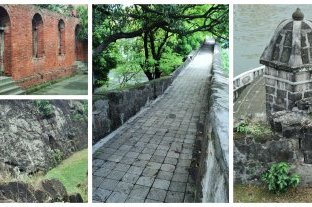
My first thought when exploring the fortifications and the Colonial heart of Manila was this must be difficult to preserve. The vegetation seemed like it was overtaking the ruins. Moreover, some parts of the fortifications were crumbling or collapsing in on itself. Considering other climate factors such as total rainfall in a year, Intramuros has unique challenges to address before producing a nomination dossier. My visit to Manila was May 2011 and perhaps the conservation within the historic district has improved.
Intramuros was previously on the Philippines tentative list and rejected in 1989. There are a lot of superlatives in the UNESCO description, such as 'exemplary' town planning that is 'exceptionally' intact, 'revolutionary' intermarriage of Western and New World . . . , 'remarkable' product of early modern Western fortification science, 'unparalleled' and a 'masterstroke' of Colonial urban planning. What can be noticed by any visitor is the grid layout of the streets, the San Agustin Church (WHS) within the walled city, Fort Santiago adjacent to the Pasig River, and Rizal Park abutting the Southern boundary. The existence of 'Intramuros Golf Club' in the buffer zone may pose problems with ICOMOS, since many of the best views of the walls are actually from the greens.
Another Tentative List update by the Philippines in 2024 was 'Corregidor Island and Historic Fortifications of Manila Bay'. One might argue that this nomination should be incorporated together with the Colonial Urban Plan and Fortifications of the Walled City of Manila. …
Keep reading 0 comments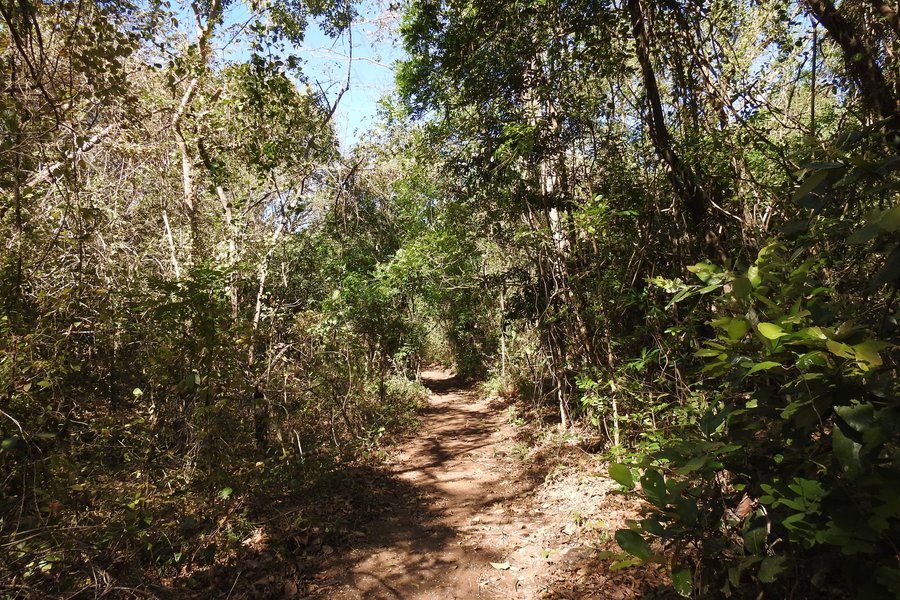
Guanacaste is a large area in northwestern Costa Rica that is easily accessible from the Liberia Airport, which has nonstop flights to many U.S. airports. Needing a short break to a warm climate, I hopped on a last-minute flight to Costa Rica to visit this World Heritage Site. Over 48 hours split over three days, I managed to visit three different areas of the vast site. Although the site is huge, most parts are within a two hour drive of the Liberia airport, off the Pan-American Highway; which is pretty well maintained.
The site is a broad Conservation Area of at least seven different national parks/reserves under separate administration that are generally disconnected, at least as far as the human entrances are concerned. Planning is essential, and so based on reviews here, the trusty Lonely Planet Guide, and a perusal of the website, I picked three areas to visit. The reviews on here were immensely helpful in describing the different areas of the park, so I wanted to leave my own to hopefully help future travelers.
After arriving at noon, I picked up a rental car nearby Liberia Airport and set off for Refugio Nacional de Vida Silvestre Bahia Junquillal, which was about a 90-minute drive. This area is a national reserve that consists of a wide beach where families visit and camp. I did a walk on the beach along the bay and also a short nature trail through the woods. There were plenty of people but …
Keep reading 0 comments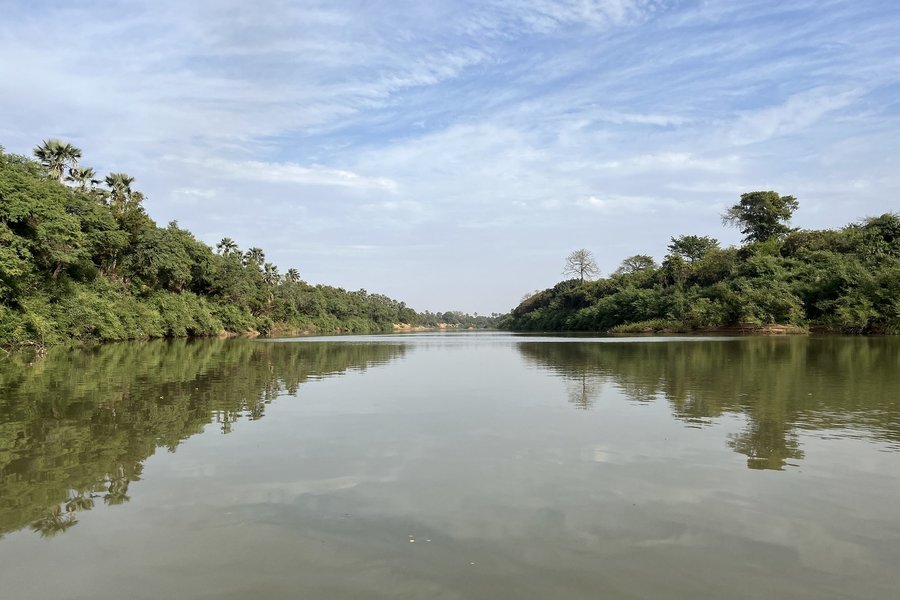
Like Bulgaria, Senegal was quick off the mark, resulting in some WHS getting in early which are questionable now. Niokolo-Koba, named after the Niokolo (Koba) River and the Kob antelope, is an enormous park in the east of the country. At its inscription it was rich in mammals including “a large population of elephants”, but after decades of poaching (which has been curtailed only in recent years), few of that is left. It has chimps, lions and other location-specific mammal species that are clinging on to existence and are heavily supported by conservation NGOs such as Panthera. Still, it’s remarkable considering the circumstances that such small and isolated populations have managed to survive for so long in West Africa.
Don’t expect to see them though, those elephants or lions which are so numerous in Southern and Eastern Africa – there are only a dozen or so here in a fairly inaccessible park. For a reality check, I recommend reading this trip report of someone who stayed in the park for 2 weeks in 2018 looking for wild dogs but saw none (no wild dogs, no lions, no elephants). Also, the park seems to leave the more interesting parts such as Mt Assirik to scientists only.
With my Gambian driver and guide, I stayed at Camp Wassadou, which lies just across the River Gambia from where the park begins. Some 20 other guests were present, which indicates that tourists still trickle in. On the afternoon of our arrival, we did …
Keep reading 0 comments
Dinosaurs have been an interest of mine since childhood. Little me would memorize every single species I could find in the books and their family, size, and modern-day locality. But I don’t think any of that could prepare me for stumbling upon and being able to hold hadrosaur vertebrae while trekking across the Albertan badlands. On one hand, I do think that fossil locales of every geological period are all somewhat equally valuable; as fossils become newer, they tend to be more complex and “impressive” whereas age in itself is already impressive, and fossils from different eras all help us to understand the history of our complex world and paint a picture of what life was like at any given point in geological history. That being said, I do have a bias for fulfilling childhood dreams, and there is just something so amazing about seeing fossils, big and small, of the very creatures that used to dominate the planet’s ecosystems. Dinosaur Provincial Park is the greatest record of the apex of the Age of the Reptiles, and it’s so easy to experience it firsthand if you’re in the area. This was one of my greatest experiences with a WHS.
I visited Dinosaur Provincial Park in July 2024, after spending the night in Brooks, about half an hour away. It was a hot day, but I arrived fairly early in the morning to make it to the 9am Fossil Finders tour that I had booked. Here’s a heads-up for anyone …
Keep reading 0 comments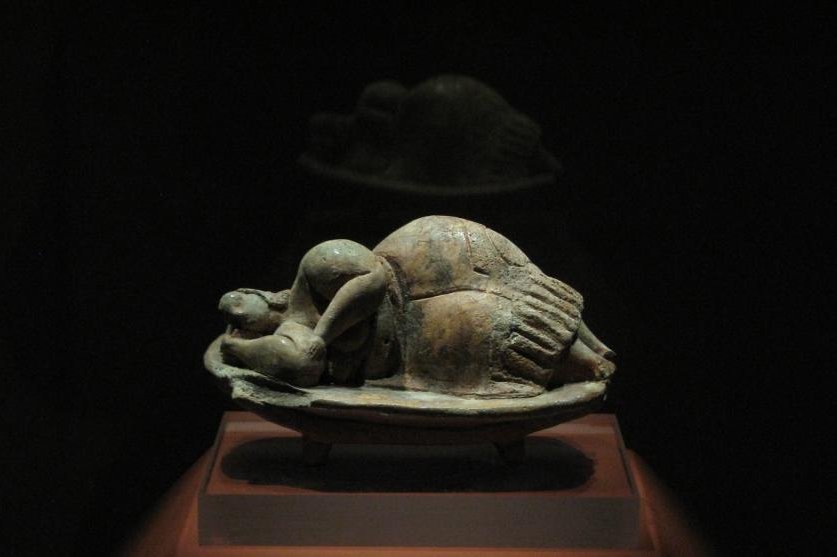
There were two deaf people in my group of visitors. At the beginning of the tour, everyone is given a fully automatic hand-held speaker to hold up to their ear throughout the duration of the tour like a cellphone. As others have mentioned, the tour of this well-preserved underground marvel is limited to groups of 10 and consists of a surround-view movie, then a walk down into the hypogeum. The entire group stops every few feet to listen to a segment of audio coming from each of their respective devices for a number of minutes, then moves forward at the physical guide's prompting and repeats the process. The in-person guide does not interact with the group nearly at all other than to prompt people forward at the end of each audio segment. I was a bit surprised that no services whatsoever were provided for the deaf individuals via sign language or anything else to help point out what was being covered in the audio segments from everyone else's devices. There were likewise no subtitles provided for the movie played at the beginning, so those first fifteen minutes or so were spent by the hearing impaired individuals primarily looking at stock video footage play across the walls in a dark room. Individuals with hearing impairment should make the decision for themselves whether the expensive hypogeum visit is worth it to them. Without being able to hear the handheld audio guide device (which contains no earbuds or bluetooth connections), the tour consists …
Keep reading 0 comments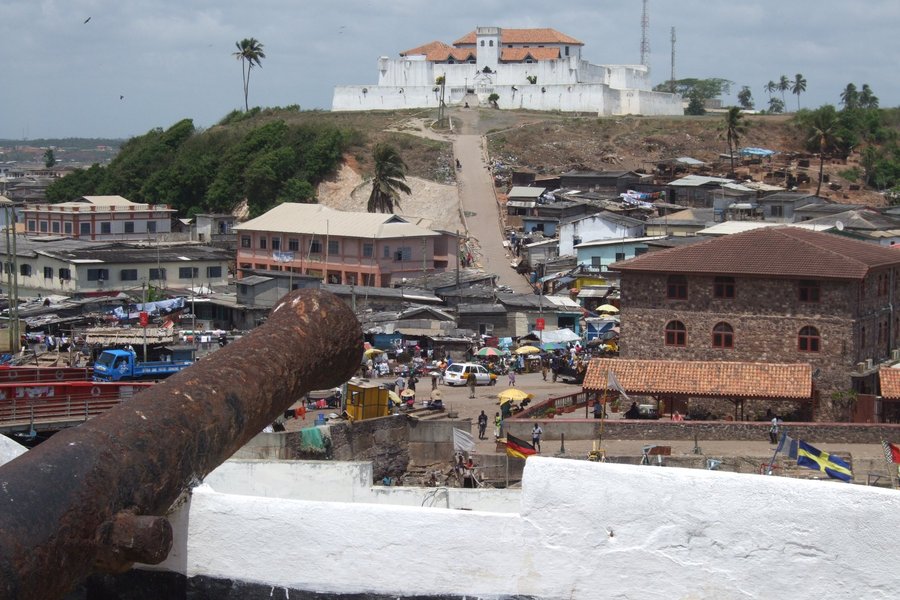
This is a serial site consisting of 3 castles and over 20 forts along the Ghanaian coast. The castles, especially Cape Coast and Elmina, are huge European fortresses built and occupied by various European colonial powers — Portuguese, Dutch, British — between the late 1400s and the early twentieth century. Their constant use means that they are still standing today, whereas most buildings from the era are long gone. The forts were built to protect settlements on the coast, including the castles, and are generally smaller and more strategically located. One of the important and dark chapters in the 500+ year history of the castles was the transatlantic slave trade. In addition to housing colonial governors and military, the castles were used to store slaves in dungeons before they were moved to boats for the middle passage.
Date of Visit: March 2013 (Cape Coast Castle), January 2025 (Elmina Castle, St, Jago Fort)
Rating: Four stars. Yes, many of the components are not well maintained and cannot be visited, but the castles are all tourist destinations with good infrastructure that are easy to visit. Moreover, these sites are an important testament to the colonial history of Africa and the transatlantic slave trade, which is not covered well by many other sites. Plus, Elmina Castle is the oldest European building built outside of Europe that remains standing — it dates to the 1480s. The castles are generally near the sea, and so you also get a glimpse of Eest African …
Keep reading 0 comments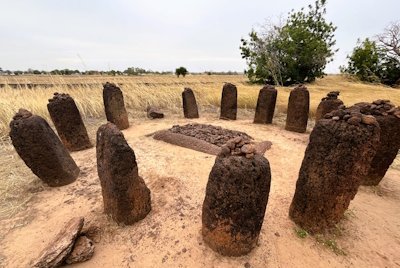
The Stone Circles of Wassu are still all standing in 2025! They even feature in Gambia’s tourism promotion video (“The Smiling Coast of Africa”) that is shown at Banjul airport and of course on the 50 dalasi banknote. We went there at the end of a long day of driving and sightseeing, it’s right near the main northern road to Janjanbureh. Official opening hours are 8-17, but we arrived at 6 pm and the woman selling tickets and the local guide were still there (maybe my guide had phoned ahead to announce our arrival). The site clearly is more equipped for receiving tourists than when Solivagant visited in 1984. There’s a small exhibition but the main findings are at the National Museum in Banjul.
The Wassu site has 11 separate stone circles, all considered to be burial sites for individuals or groups of people. It has the tallest stone (2.59m) of all components. They are dated to 750 AD, while the dating of the Senegalese sister site Sine-Ngayene after recent archaeological research has been pushed back as far as 950 BCE. No excavations at Wassu have been done recently, but the local guide told us that they had put in a request for funding to excavate the one circle that is a bit different from the rest (pictured). It has a horizontal stone slab in the center of the circle.
All standing stones now have a collection of small stones on top, added by visitors who see …
Keep reading 0 comments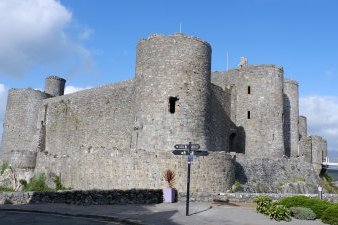
I'm probably biased, being born and bred in Wales and in particular North Wales so I should really rate these castles as 5 star, especially Harlech (picture) and Conwy, both for their aesthetics and location but all 4 (Caernarvon and Beaumaris the others) are worth visiting.It's ironic that these castles (so expensive to build at the time they bankrupted the king of England) that were built to suppress the Welsh, are now one of the major tourist attractions in North Wales.I have never understood fully why these 4 castles alone were given UNESCO WHS listings when there are plenty of equally impressive castles all over Wales, especially West Wales but I'm probably splitting hairs.Harlech castle is spectacular being high above the coast on a rocky promontory. It's also fairly compact and a classic castle shape, towers linked by curtain walls within a moated area.Similarly, Conwy sits at a vantage point on the estuary of the river Conwy and dominates the landscape for miles. There's not much else to see in Harlech but there are plenty of nice places nearby whereas Conwy is a delightful historic town with some of the oldest houses in Wales still standing.I would definitely recommend a trip to visit all four castles and experience some of the beautiful landscape that Gwynnedd has to offer at the same time.
Keep reading 0 comments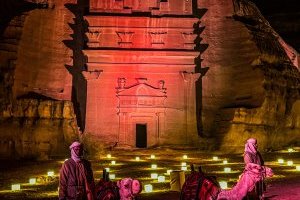
Visited this site in January 2025. Day tour (95 SAR) remains the same as described by Tony, Els and Martina, covers 4 clusters and only one tomb (#26) can be visited inside. Nothing to add. After that I also took Hegra After Dark tour (200 SAR), which is offered at 18:00 and 21:00 daily except Sundays and Mondays. It is more atmospheric and entertainment experience rather than historical insight. You will be driven by a horse-drawn carriage to a fifth cluster not included into day tour, called Jebel Khraymat. The area is beautifully lit by many lamps. After all people are gathered, something like live performance involving about 20 dressed actors begins. The first part of the show starts in the semicircular square covered by the tombs and then proceeds in a “nabatean market” with more tomb facades on the background. Various traditional canapes, dates, sweets, drinks can be tasted during the show. After approximately 1.5 hours, visitors are brought back to the visitor center by the carriages. Another interesting historical tour is Dadan & Jabal Ikmah Tour (60 SAR). It doesn’t cover formally listed territory, but adds additional historical insight on Al Ula. The tour starts from Dadan visitor center with some archeological facts on display and viewing platform with binoculars towards Dadanitic rock-cut burial niches. Two famous tombs are flanked with a pair of guard lions each. The tombs were cut circa 500 years BCE. The bus then brings you to the ancient archeological site of Dadan with …
Keep reading 0 comments